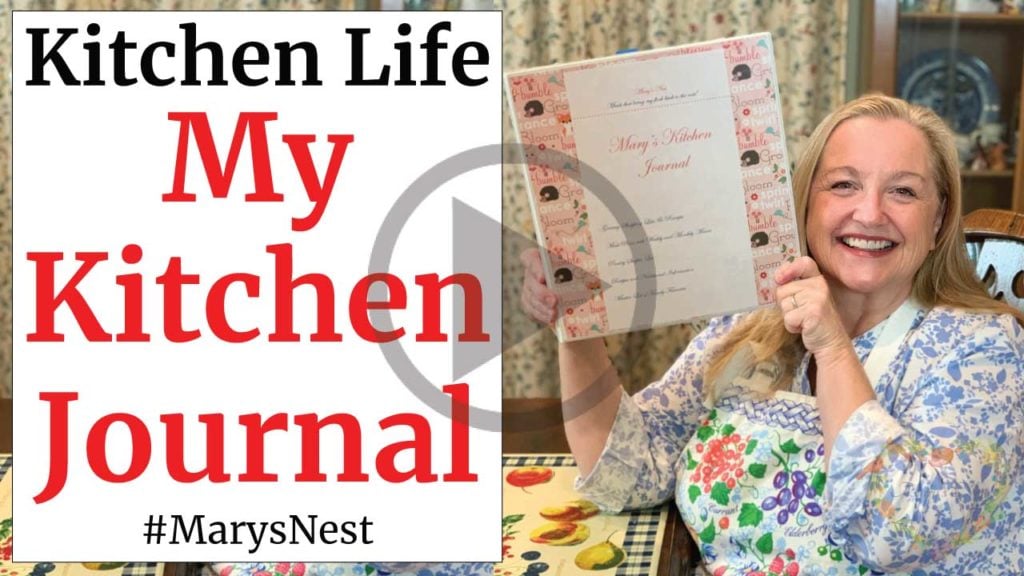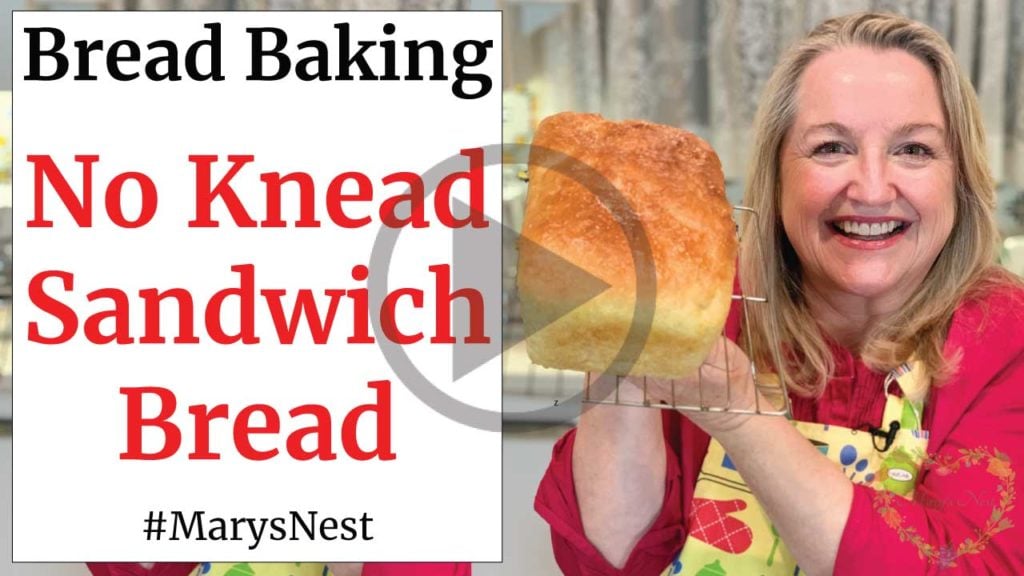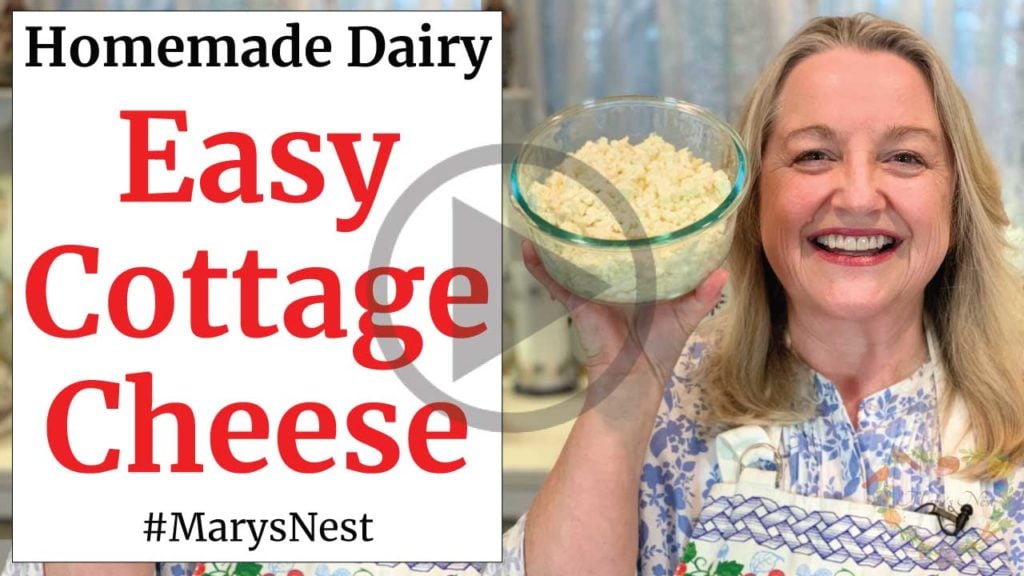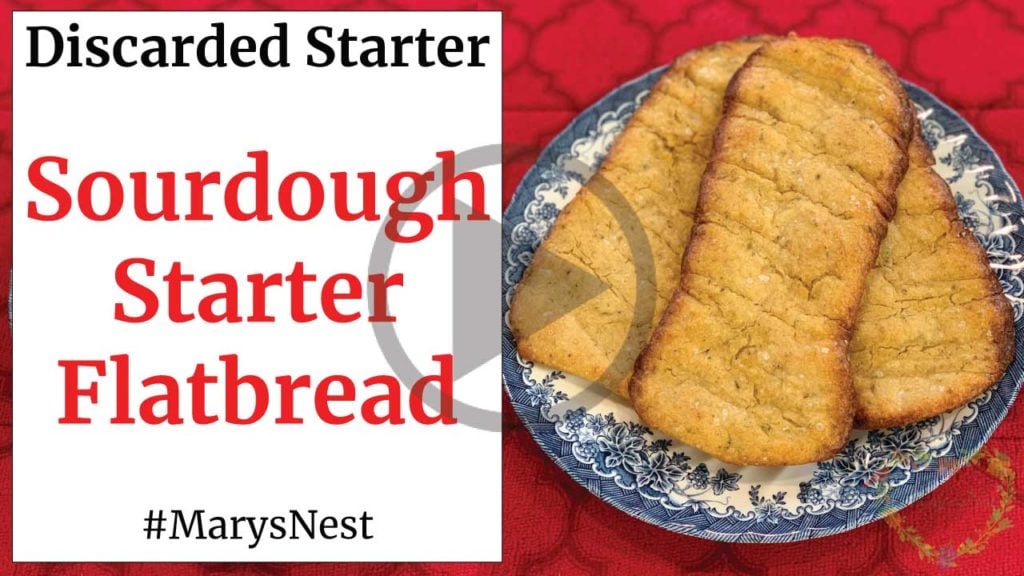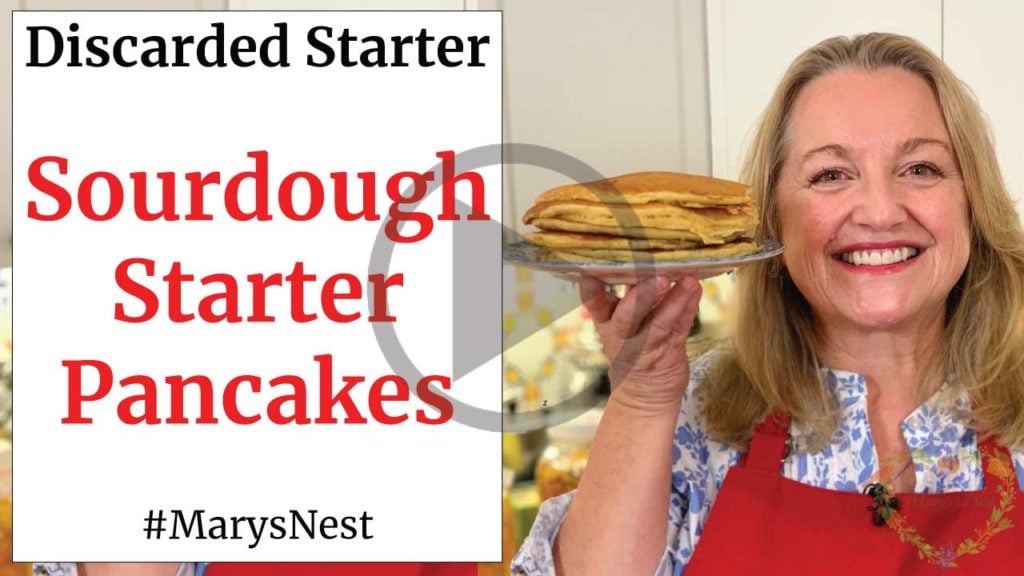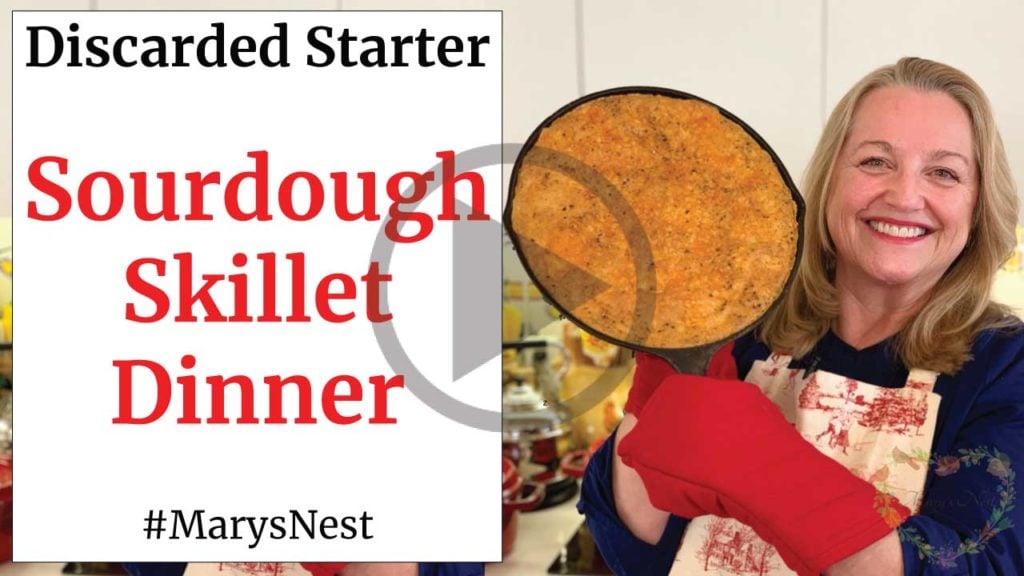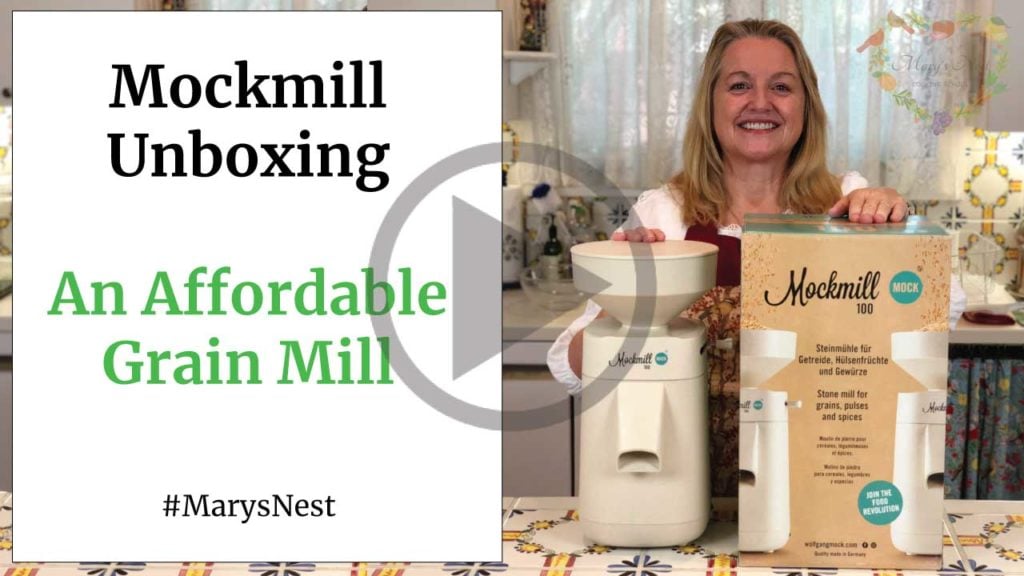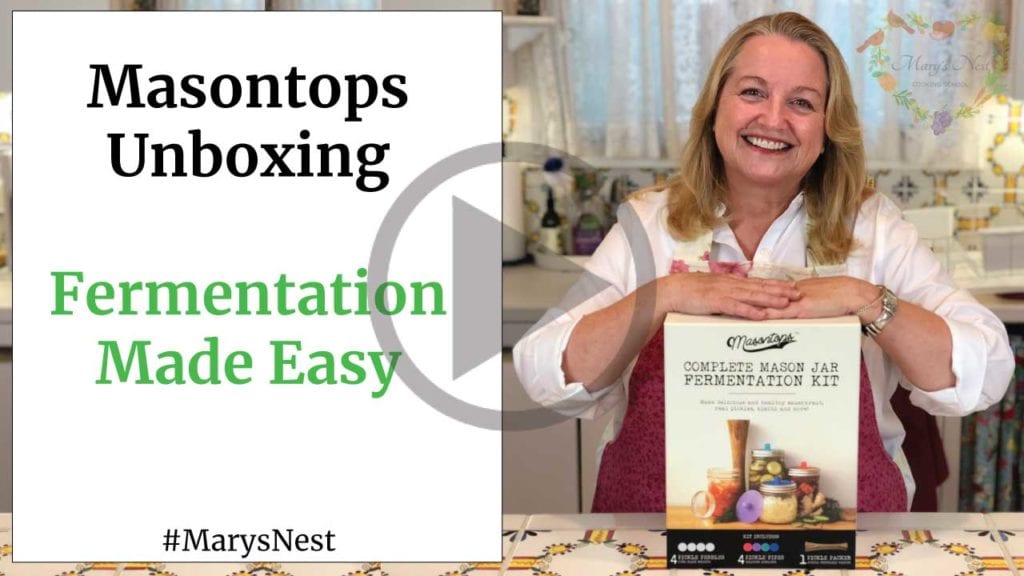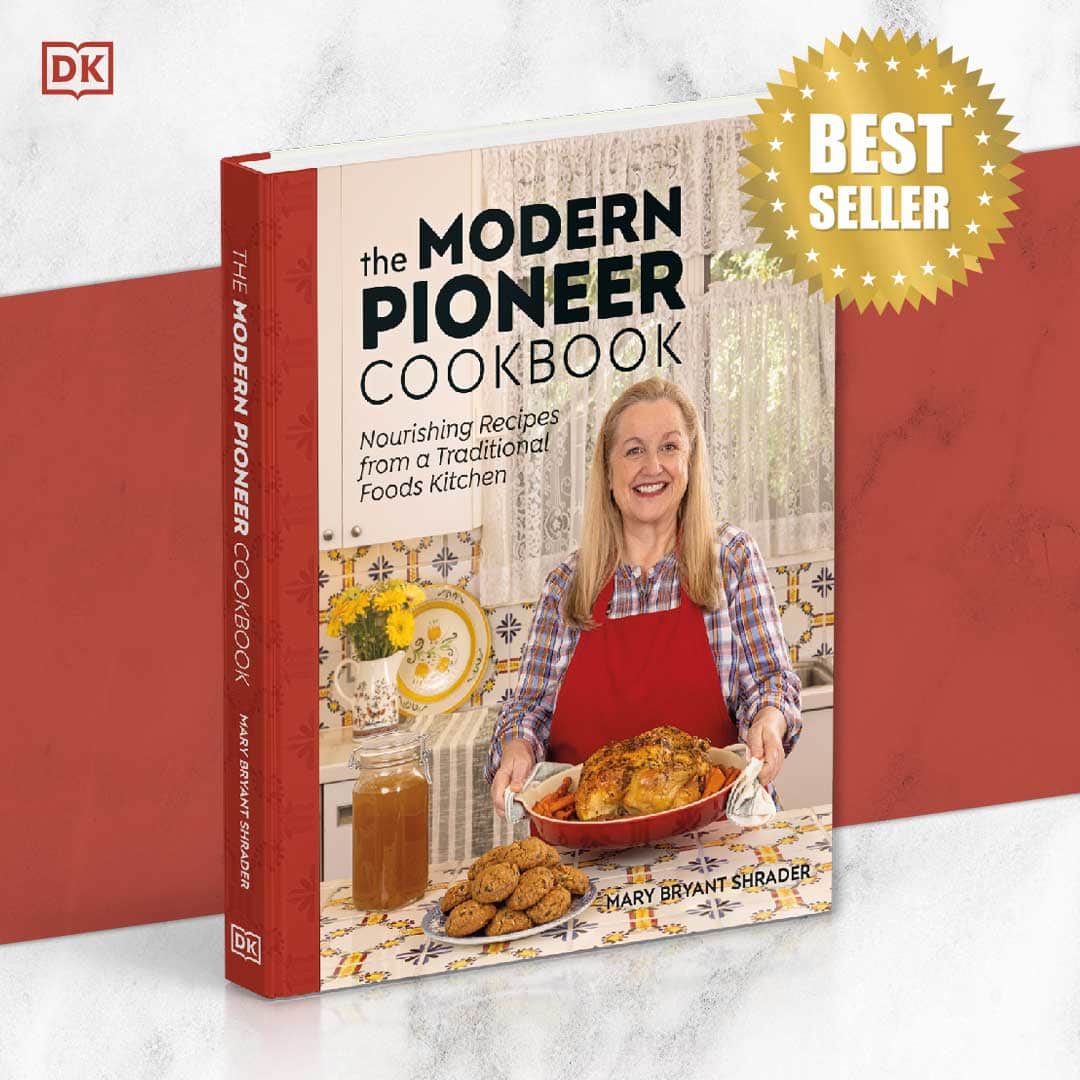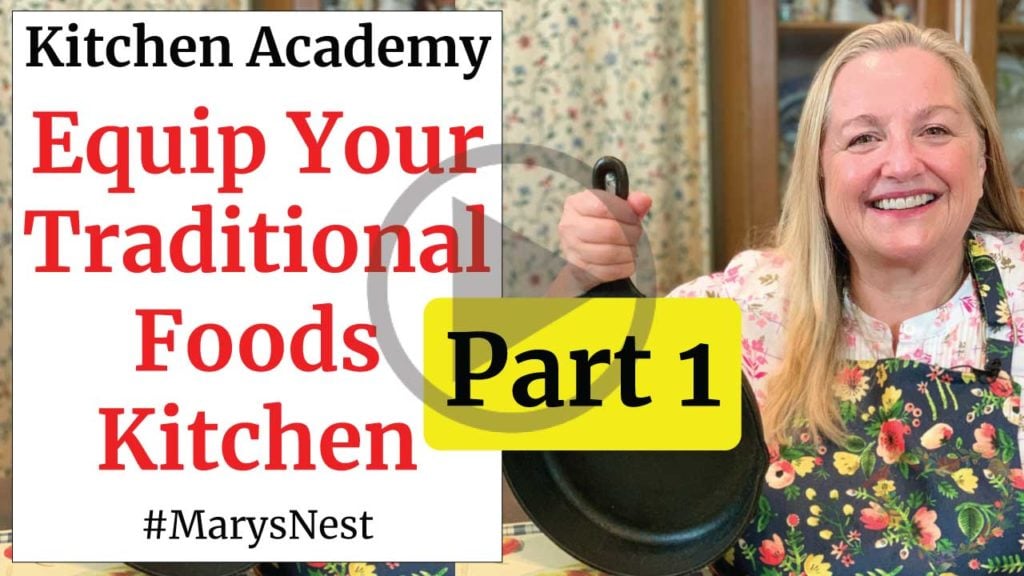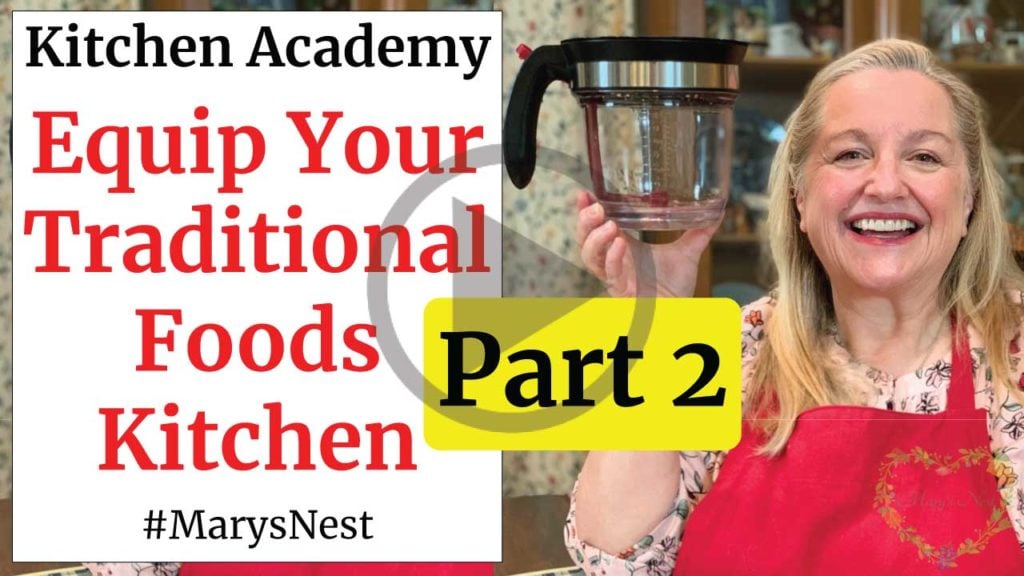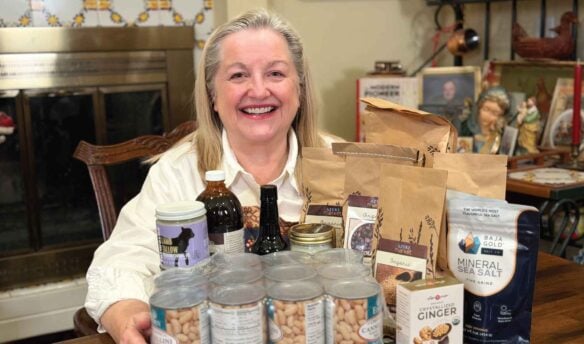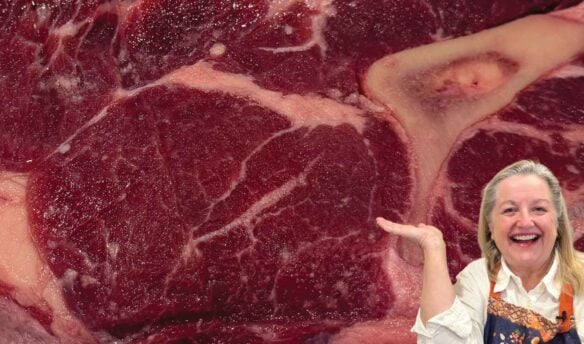If you’re unsure where to start on your traditional foods journey or if you feel overwhelmed with all the different homemade recipes, I’ll show you ten easy ways to create a Traditional Foods Kitchen with a simple chart you can print out and keep in your kitchen.
So be sure to download my free Create Your Traditional Foods Kitchen printable chart that accompanies my video. This chart breaks up the essential traditional food recipes into manageable categories so you can choose the recipes you want to try over a four-week period.
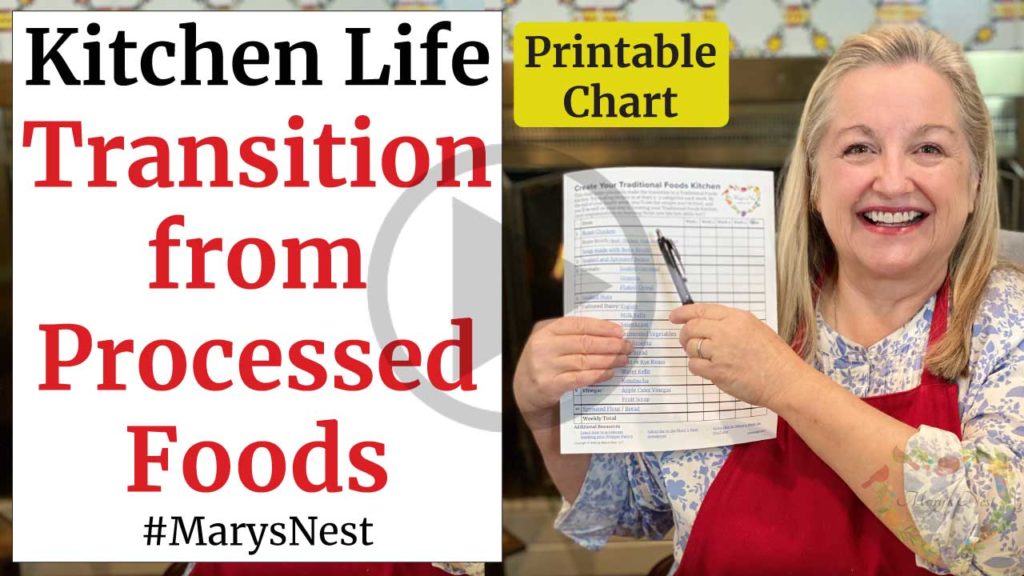
Affiliates note: As an Amazon Associate I earn from qualifying purchases. My content may contain affiliate links to products and services. If you click through and make a purchase, I’ll receive a small commission. It does not affect the price you pay.
Table of Contents
- Creating the Traditional Foods Kitchen
- Mastering the Basic Video Series
- Download the Create Your Traditional Foods Kitchen Chart
- Using the Traditional Foods Kitchen Chart
- The Importance of a Kitchen Journal
- More Recipes for Your Traditional Foods Kitchen
- Looking for Pastured Chickens?
- Grind Your Own Flour with the Mockmill
- Masontops Mason Jar Fermentation Kit Discount Coupon
- The Modern Pioneer Pantry
- Download Your Free 36-Page Pantry List
- The Modern Pioneer Cookbook
- Join the Traditional Foods Kitchen Academy
- Shop for items used in this blog post or video
Creating the Traditional Foods Kitchen
You’ve probably heard me talk about transitioning from a processed foods kitchen to a traditional foods kitchen in my videos, but you may not know what those terms mean.
The Processed Foods Kitchen
A processed foods kitchen is one where you rely heavily on packaged convenience foods for your meals. These foods include:
- Bottled condiments
- Boxed cereals
- Boxed meals
- Packaged crackers
- Pre-prepared meals
- And more!
The Traditional Foods Kitchen
A traditional foods kitchen is one where you prepare most of your food homemade from fresh ingredients, and you create meals that are nutrient-dense.
Plus, you prepare these fresh foods properly. By that, I mean you prepare them much in the same way our ancestors did so that you maximize the nutritional absorption of the food’s vitamins and minerals.
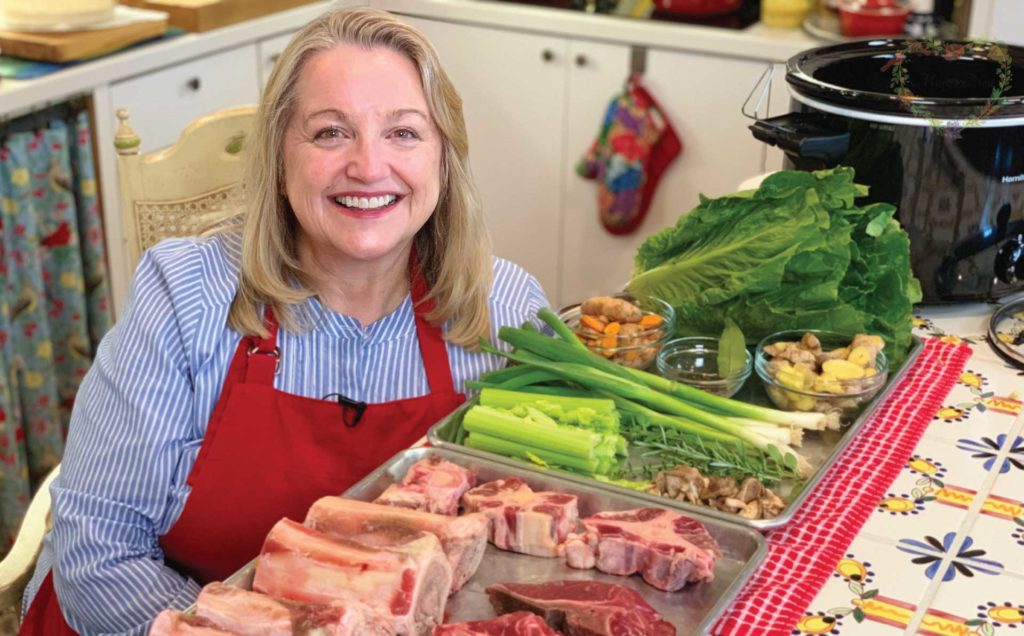
The foods you can make in a traditional foods kitchen include:
- Cooking whole cuts of meat on the bone, such as a whole chicken or bone-in chuck roast.
- Using leftover or fresh bones to make bone broth.
- Culturing your own dairy by making homemade yogurt, kefir, cheese, and other cultured dairies.
- Fermenting fresh vegetables to make side dishes like sauerkraut.
- Soaking and sprouting beans and nuts to make them more digestible.
- Making a sourdough starter and then making homemade sourdough bread.
- Soaking and sprouting grain to create homemade sprouted flour and then using the flour to make highly digestible:
- Cookies
- Muffins
- Quick breads
- And other nutritious baked goods.
And that’s just the beginning!
Mastering the Basic Video Series
If you are just starting out on your journey to creating a traditional foods kitchen, the list of traditional foods that you can make might be overwhelming, even daunting!
However, don’t worry. As I said, this is a journey. It may take you a little while until you are comfortable making traditional foods. And I am here to help with the following resources:
- First, I have a Mastering the Basics of Nutrient Dense Foods Cooking series that walks you through step-by-step how to make all these foods. These videos are directed to beginners, so each video is a complete class on the subject.
- In addition to this series, I have numerous follow-up videos (probably close to 400 as of this counting!) on my Mary’s Nest YouTube channel to help you expand your traditional foods cooking skills.
Download the Create Your Traditional Foods Kitchen Chart
For this week’s video, I created a special Create Your Traditional Foods Kitchen printable chart to help you visualize and track your journey over four weeks to start your Traditional Foods Kitchen. This chart breaks down recipes for traditional foods into 10 manageable categories.
Click or press the following button to download your free Create Your Traditional Foods Kitchen printable chart.
After you download and print out the chart, tape it to your kitchen pantry door or use a magnet to place it on your refrigerator so you can see the printed chart regularly and track your progress.
You can also store the PDF file of the chart on your electronic device and click or press on the links in the file to go to the recipes and videos that correspond to preparing the traditional food.
Using the Traditional Foods Kitchen Chart
Using this chart will help you make the transition to a Traditional Foods Kitchen easy and doable.
To learn how to make a variety of traditional foods, follow these steps:
- Each week, select 2-3 recipes in different categories to try.
- Record what you did and the ingredients you used for each recipe in your kitchen journal. This will help you easily recreate a successful attempt or help you fine-tune your recipe the next time you try it.
- Check off the recipe in the row and week column after you complete the recipe.
- Repeat steps 1 through 3 for four weeks.
- At the end of four weeks, congratulations! You will have learned 10 new traditional food skills and have an idea of the types of recipes you want to try again in the future.
Your goal: Try a total of 10 recipes at the end of four weeks. The 10 recipes you chose gave you the 10 easy ways to create a traditional foods kitchen because they are personalized to your needs and kitchen.
You can print out a new chart to start another four-week process of learning new traditional foods recipes, or you can retry the ones you previously did to help increase your mastery of them.
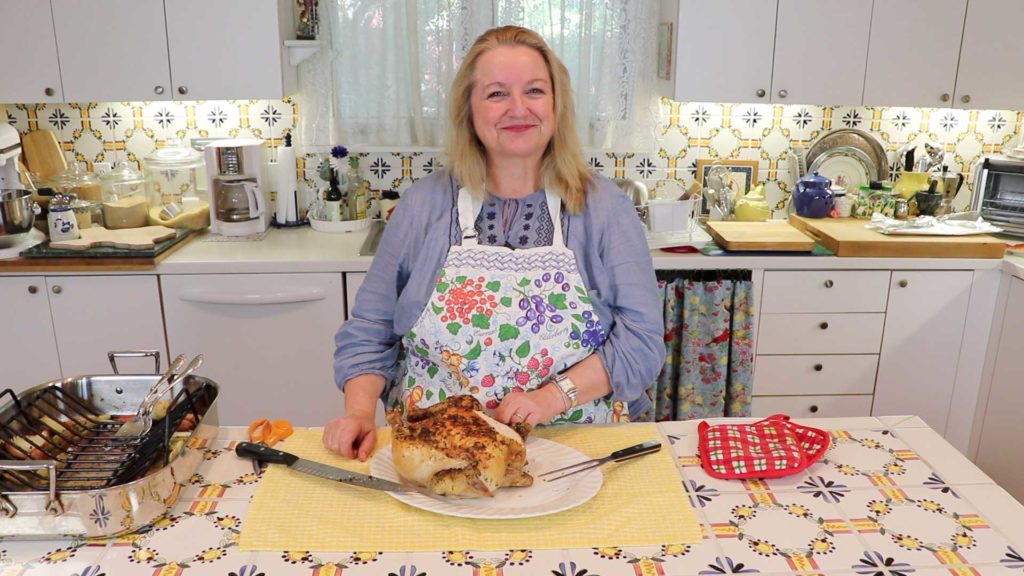
Example Using the Chart
Here’s an example of how you might use the chart:
- First week: You might try making a roast chicken and chicken bone broth. These recipes are both in category 1, and they flow nicely with each other since you can use the carcass of your roast chicken to make chicken bone broth.
- Second week: This could be your week for soaking and sprouting, which means soaked and sprouted beans (category 2), soaked oatmeal (category 3), and soaked nuts (category 4).
- Third week: If you enjoyed the activities of week 2, you might want to continue with making sprouted flour and baking bread from your sprouted flour (category 10).
- Fourth week: For the last week, you may want to concentrate on ferments (category 6). This means making sauerkraut, fermented carrots, and fermented ketchup.
In this example, you will have tried 10 recipes by the end of the fourth week. And looking at the checkmarks on your chart, you’ll see how much you’ve done and how far you’ve progressed toward your goal of transitioning to a traditional foods kitchen.
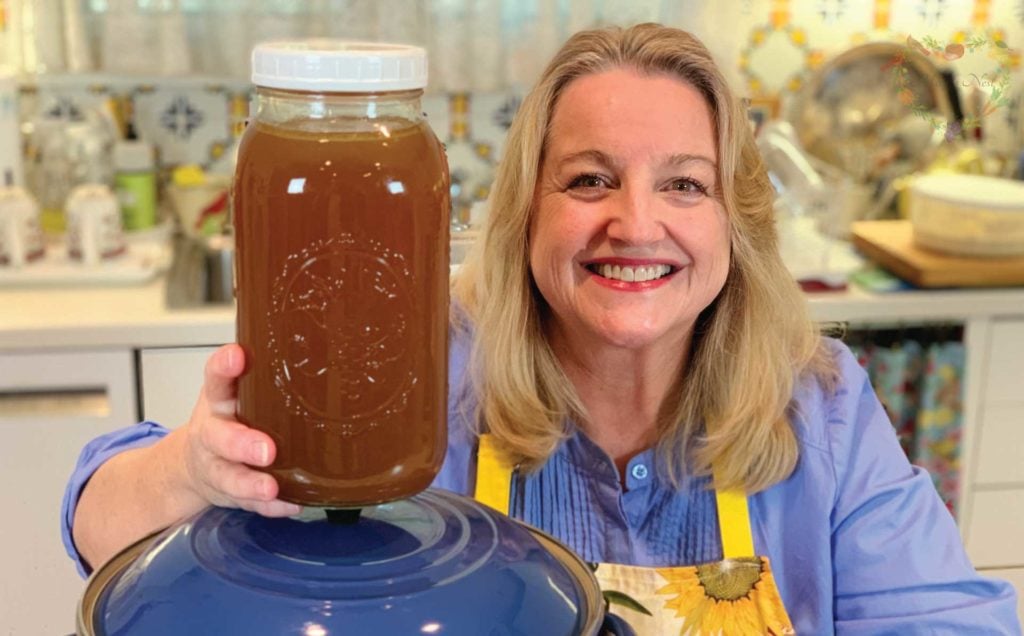
Making Progress to Your Traditional Foods Kitchen
Little by little, you will find yourself making more than just 2-3 foods each week. After a few months to a year, chances are you will be making most of these traditional foods every day! This chart will help you accomplish your traditional foods goals by making it easy to concentrate on a few recipes at a time.
You don’t need to rush this process, and you don’t need to be perfect. Instead, buy what you can afford, and do what you can when you can. Even just simple things such as roasting a chicken are a wonderful start.
Extra credit: Try making a recipe in each of the ten categories, either in your first four weeks or in your first eight weeks (two four-week cycles).
The Importance of a Kitchen Journal
In previous videos and blog posts, I talked about the importance of keeping a kitchen journal whenever you are creating or maintaining a traditional foods kitchen.
Your journal will be an essential reference because there is some trial and error when you are new to making traditional foods. If you write down what you did when you made a certain food, you will have those notes to help guide you the next time you make that food again.

For example, when you try your hand at making ferments or sourdough, you might encounter some challenges the first few times. However, if you have your kitchen journal to review before you try your recipe again, your notes will help you know what changes you need to make on your next try.
For example, you may need to put your ferment in a warmer or a cooler place. And you might have more success making a sourdough starter if you use rye flour instead of all-purpose flour.
Whatever the case may be, looking back on your kitchen journal notes and knowing what happened or didn’t happen will help you succeed on this traditional foods journey.
More Recipes for Your Traditional Foods Kitchen
When it comes to making traditional foods, I like to meet people where they are. So I am not going to tell you that you must have raw milk, a sourdough starter, and kombucha SCOBY on day one.
Instead, you’ll want to start learning simple recipes that will give you the skills and confidence to try more complex recipes in the future.
It’s Easy to Make Sandwich Bread
I never want you to grow disheartened on your journey to a traditional foods kitchen. If you feel overwhelmed, take this journey slowly.
It’s okay to start with baking a simple bread using all-purpose flour and yeast before you dive into making a sourdough bread, especially if you’ve never baked before.
And I have the perfect bread to get you started. It’s a no-knead sandwich bread that is very similar, but better than the store-bought bread you buy in a plastic sleeve.
This delicious, freshly-baked sandwich bread will become a new staple in your kitchen, and chances are you will never want to buy the store-bought version again!
Simple Homemade Cheese
If you have never tried making your own homemade cottage cheese or a simple one ingredient homemade cream cheese, you will be surprised at how easy these foods are to make with the following recipes.
Homemade Slice and Bake Crackers
Making homemade crackers is easy when you make my slice and bake crackers. You don’t need to roll dough, which is why this recipe is so simple to prepare. Plus, the long dough logs that you create freeze beautifully and are ready to slice and bake whenever you want homemade crackers fresh from the oven!
Sourdough Discard
As you move along your traditional foods journey and start to make a sourdough starter and sourdough bread, you will have what is referred to as a sourdough discard.
But this is NOT to be discarded! Instead, save your discard and learn to make all sorts of delicious sourdough baked goods, including pancakes, waffles, crackers, and more.
Looking for Pastured Chickens?
If you can’t find pastured chicken for making your first roast chicken meal in your neighborhood supermarket or farmer’s market, check out US Wellness Meats for plump whole chickens that have been raised the healthy way on green grass. And sometimes, they are even sold with the feet, which will be a wonderful addition to your bone broth making!
But US Wellness Meats doesn’t just sell pastured chickens. They also have a superb selection of organic meats and beef bones, all from cattle raised on grass.
- Use discount code MARYNEST and my link to save a one-time 15% off regular-priced items on your US Wellness Meats order. You can shop for a variety of products, including:
This post is not sponsored. I’m a long-time customer of US Wellness Meats because I have always been impressed by the quality of their products. Check out my US Wellness Meats unboxing video to see the types of products you can get, including bones for beef bone broth!
Grind Your Own Flour with the Mockmill
When it comes to electric grain mills, after I did A LOT of research, I decided to buy a Mockmill. And am I so happy I did! The Mockmill is a very affordable but beautifully crafted German-made mill that stone grinds grain with settings ranging from 1 to 10—fine to coarse ground grain.
You can see me unbox and try out the Mockmill 100 Grain mill in the following video.
Masontops Mason Jar Fermentation Kit Discount Coupon
Although you don’t need any special equipment to start making ferments, the Masontops kit can help you simplify the process and enable you to create your ferment successfully. In my Masontops unboxing video, I show you my Masontops Complete Mason Jar Fermentation Kit and go over everything the kit includes.
- Use promo code MARYSNST for a one-time 15% off Masontops and Breadsmart products on Amazon.com. (This is not a sponsored post. Masontops provided me with a special discount code for my viewers. I like their products, and I think you will too.)
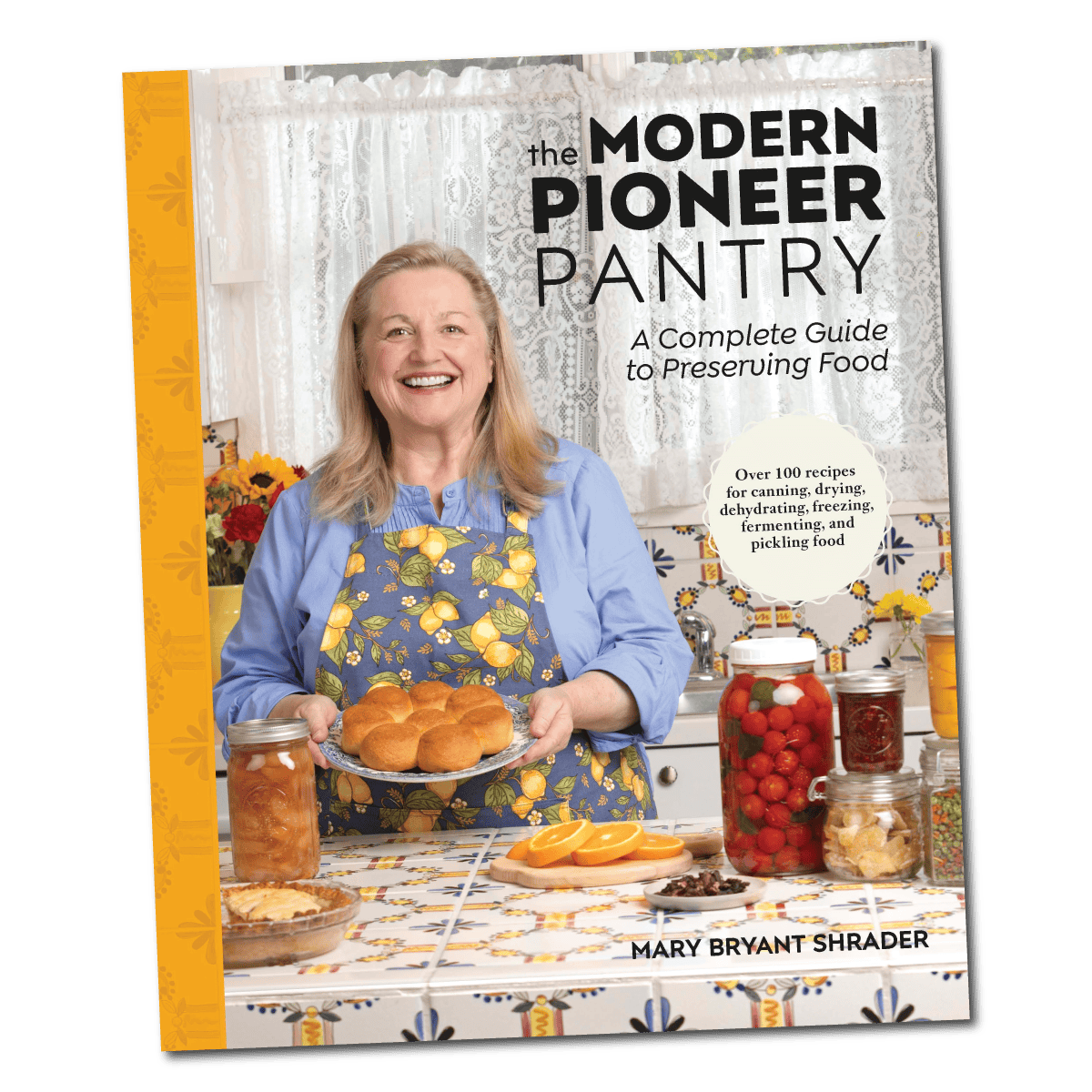
Order YOUR COPY Now!
The Modern Pioneer Pantry
Simple ingredients, timeless techniques, and a well-stocked pantry. Discover over 100 nourishing recipes to preserve food and turn pantry staples into delicious, homemade meals. Build a wholesome, traditional pantry—just like a modern pioneer!
Download Your Free 36-Page Pantry List
No matter where you are on your traditional foods journey, knowing what to stock in your Four Corners Pantry* will make your journey considerably easier. I have exactly what you need!
For an extensive list of the traditional foods you can make and purchase to stock your pantry, be sure to download my free 36-page Traditional Foods Pantry List. This comprehensive eBook is full of links to recipe videos, helpful articles, and more!
*The Four Corners Pantry is an expression that describes all the areas where we store food, which includes your:
- Working Pantry (where you keep nonperishable foods that you access every day)
- Refrigerator
- Freezer
- Extended or “Prepper” Pantry (where you store your backup supplies when you need to restock your Working Pantry)
And if you haven’t had a chance to start your Prepper Pantry yet, I’ll show you how to accelerate stocking your Prepper Pantry in the following video.
Join the Traditional Foods Kitchen Academy
Are you looking for more traditional foods videos? If so, I invite you to join the Traditional Foods Kitchen Academy. Members of this optional paid YouTube community get access to exclusive videos and other members-only perks. Plus, your YouTube comments include a special members-only badge.
In the following members-only video series, I talk about equipping the Traditional Foods Kitchen.
Stay in Touch with Mary’s Nest
- Subscribe to My YouTube Channel for Traditional Foods Videos (Free) - When you subscribe, be sure to click on the notification bell that will let you know each time I upload a new video.
- Subscribe to Mary’s Traditional Foods Newsletter (Free) - Get a free 36-page eBook for signing up: How to Stock Your Essential Traditional Foods Four-Corners Pantry.
- Join the Traditional Foods Kitchen Academy - For more detailed videos and exclusive members-only perks, join my YouTube membership community.
- Order The Modern Pioneer Cookbook - Get a hardcover book of Mary's nourishing recipes from a Traditional Foods Kitchen. This bestselling cookbook is published by Penguin Random House with their DK imprint.
- Order The Modern Pioneer Pantry - Get Mary's latest hardcover cookbook about preserving food and making delicious meals from your Four Corners Pantry. Mary's second cookbook is also published by Penguin Random House.
I look forward to having you join me in my Texas Hill Country Kitchen!
Shop for items used in this blog post or video
Favorite Kitchen Supplies
- Favorite Aprons
- Spice Grinder
- Countertop Burner (On my kitchen island in many recipe videos.)
- Handheld Vacuum Sealing System
- Vacuum Lids
- Whisk
- Silica Gel Packets (Helps keep moisture from building up in your mix)
- Cast Iron Dutch Oven
- 8-Quart Slow-Cooker
- Fat Separator (Clever kitchen device to help you decant bone broth)
- Flour Sack Towels
- pH Strips (Helps you check on the acidity of your vinegar)
Amazon Shop and Shopping Guide
- Visit Mary’s Nest Amazon Shop
- Get a 30-day Audible trial with a free audiobook
- Visit my Shopping Guide page
Get up to 15% off for stocking your Traditional Foods Pantry and equipping your Modern Pioneer Kitchen, including discounts from US Wellness Meats, Farmhouse Teas, Backwoods Home, Masontops, Cultures for Health, Survival Garden Seeds, Redmond Real Salt, and More!
